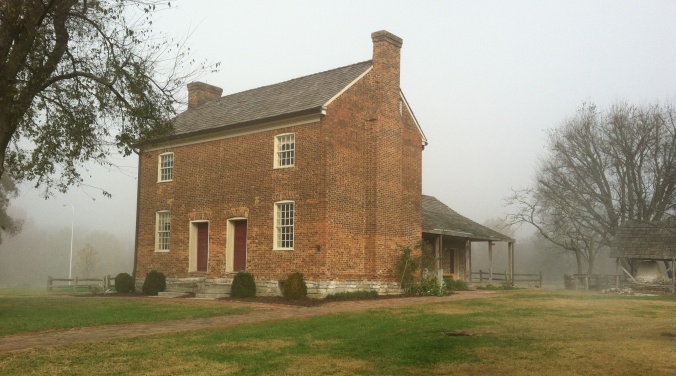I have at hand Year-Book of the Disciples of Christ, Their Membership, Missions, Ministry, Educational and Other Institutions. Cincinnati: General Christian Missionary Convention, 1885.
This was not the first attempt to gather statistics, but we may regard as the first of its kind and scope. Earlier attempts did quite well to list preachers and names of congregations. The 1885 Yearbook lists congregations in 38 American states and territories plus Canada, Great Britain, New Brunswick, Prince Edward Island, Australia, New Zealand and Tasmania. Under each state, territory or country, the congregations are listed in nearly alphabetical order by the name of the church. At least all the names starting with the same letter are grouped together. Not truly alphabetical, but close. Also included are lists of preachers and descriptions of mission activity, higher educational institutions and literary output.
What sets the 1885 book apart from its sporadic predecessors is that for each congregation it also provides names of elders, Post Office [the closest thing in 1885 to an address as we know it], the frequency of preaching [tri-monthly, monthly, semi-monthly, weekly, irregular or no data provided], number of members, number of Sunday School pupils, number of officers and teachers [presumably within the Sunday School arrangement], value of church property, the amount raised in 1883 for local work, the amount raised in 1883 for missions, and the name of the regular preacher in 1884.
At 159 pages the document is by a large margin the largest and broadest such directory undertaken thus far among the Stone-Campbell movement. However, it has significant limitations. The compiler, evidently Robert Moffett of Cleveland, Ohio, states in the first sentence of the General Introduction that “It can not be too forcibly enjoined on all who examine this Year-Book, that no pretensions to completeness are made for it. On the contrary, it is expressly claimed that its statistics are very incomplete.” He cites the organizing committee’s utter lack of financial resources and serious disorganization as factors mitigating against a fuller or more accurate compilation. As a ” work of purely voluntary goodwillI…” Moffett states, “it may well be regarded as surprising that they have accomplished so much.”
The committee relied upon the personal-informational network put in place by advocates of missionary societies to gather their statistics: “That only in States having well-established and vigorous State organizations–such as Illinois, Iowa, Kansas, Missouri, New York, North Carolina, Ohio, Pennsylvania and Virginia–has it been possible to obtain even approximately full lists of the churches; and much less their statistics.” In short, the advocates of the Society kept track of the churches in their area. Some states, such as Kentucky, Georgia, Indiana, Texas and Arkansas, “there has not been the same pains taken by the State organizations to gather statistics.” Finally, “in other quarters–such as Tennessee and the majority of the Southern and far Western states and Territories–they have been obliged to depend on individual aid–generally on such preachers as were known to them. Hence their work must be regarded as merely a beginning.”
There are 264 Tennessee congregations listed. None of those in Nashville are among this number. Not Church Street or Second Christian downtown nor Woodland Street in East Nashville. Outlying county congregations like South Harpeth, Philippi, and on out to Lavergne, Franklin and Owen Chapel are also missing. Tucker’s Crossroads or Bethlehem in Wilson County is there, along with Bush’s Chapel in Sumner County up on the ridge and Sycamore over in Cheatham County. But no Nashville congregations, not a one of them.
The list of preachers for Tennessee was hastily added late, after the majority of preachers were compiled into the main listing. Of the 2620 preachers listed, here are those with Nashville addresses: R. Lin Cave [who was at Church Street in downtown], J. P. Grigg [who preached all over but chiefly in 1885 at the infant North Nashville, or 8th Avenue North congregation], David Lipscomb [a member at Church Street in 1885], William Lipscomb [listed in Brentwood, but still very close], W. J. Loos [who was at Woodland Street in East Nashville as a regular preacher], J. C. McQuiddy {who was at the infant Foster Street mission in North Edgefield], a Rawlings [who knows?], E. G. Sewell {an elder at Woodland Street], Rice Sewell [listed as Donleson, in Davidson County], and E. S. B. Waldron [listed as Lavergne, on the Davidson/Rutherford county line]. No other Tennessee city has as many resident preachers as Nashville. One one African-American preacher was listed in Tennessee, H. Hankal in East Tennessee.
The Block River [could be Black River] church in Connersville, reported 250 members with no pupils in Sunday School; they did not report the amount spent in local or mission work. They heard preaching monthly by Joseph Hill.
The Catby’s Creek [almost surely the Cathey’s Creek] church, at Isom’s Store, reported monthly preaching by T. I. Brooks. A congregation of 300 members, they had 25 Sunday School pupils, taught by four teachers. With property valued at $2000, this congregation spent $100 for local work and $40 for mission work in 1883.
The McMinnville congregation, meeting weekly for preaching by George W. Sweeney, had 350 members, 125 in a Sunday School taught by five teachers. Their property was valued at $5000. They spent $2500 at home and $100 for mission work in 1883. I have a neat old photograph of the McMinnville meetinghouse. It reads ‘Church of God’ in the stone tablet high above the front door. I will have to post it here sometime.
There are a few other congregations reporting memberships between 100-200, but in Tennessee, the Block river, Cathey’s Creek and McMinnville are the largest as recorded in the 1885 Year-Book. The McMinnville congregation tied with Fayetteville in terms of the value of church property ($5000) and with the Memphis congregation for the amount spent in local work ($2500). A few other churches show property valued above $1000, but McMinnville and Memphis are far and away the leaders in expenditures, as reported in this book.








